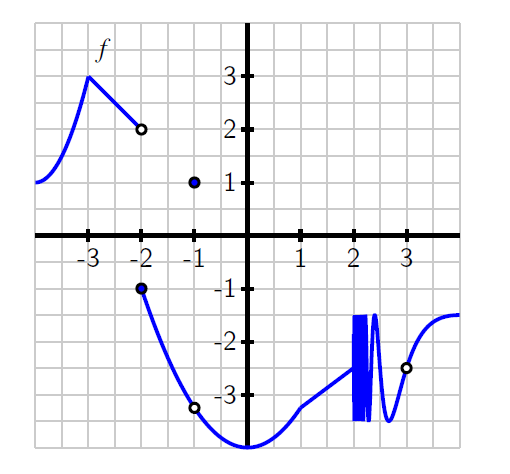1.3 Continuity
Pre-Class:
- Complete 1.2 Homework assignment: check and correct.
- Take notes on the videos and readings (use the space below).
- Work and check problem #1 in the 1.3 NOTES section.
- Complete the 1.3 Pre-Class Quiz.
Introduction
-
The table below shows the cost of mailing a letter that weighs x ounces.
Weight Cost 0 < x ≤ 1 49¢ 1 < x ≤ 2 70¢ 2 < x ≤ 3 91¢ 3 < x ≤ 4 112¢ 4 < x ≤ 5 133¢ - Complete the table of letters with the following weights.
Weight Cost .98 49
1.26 70
2.55 91
3.01 112
4.29 133
- Graph the function.
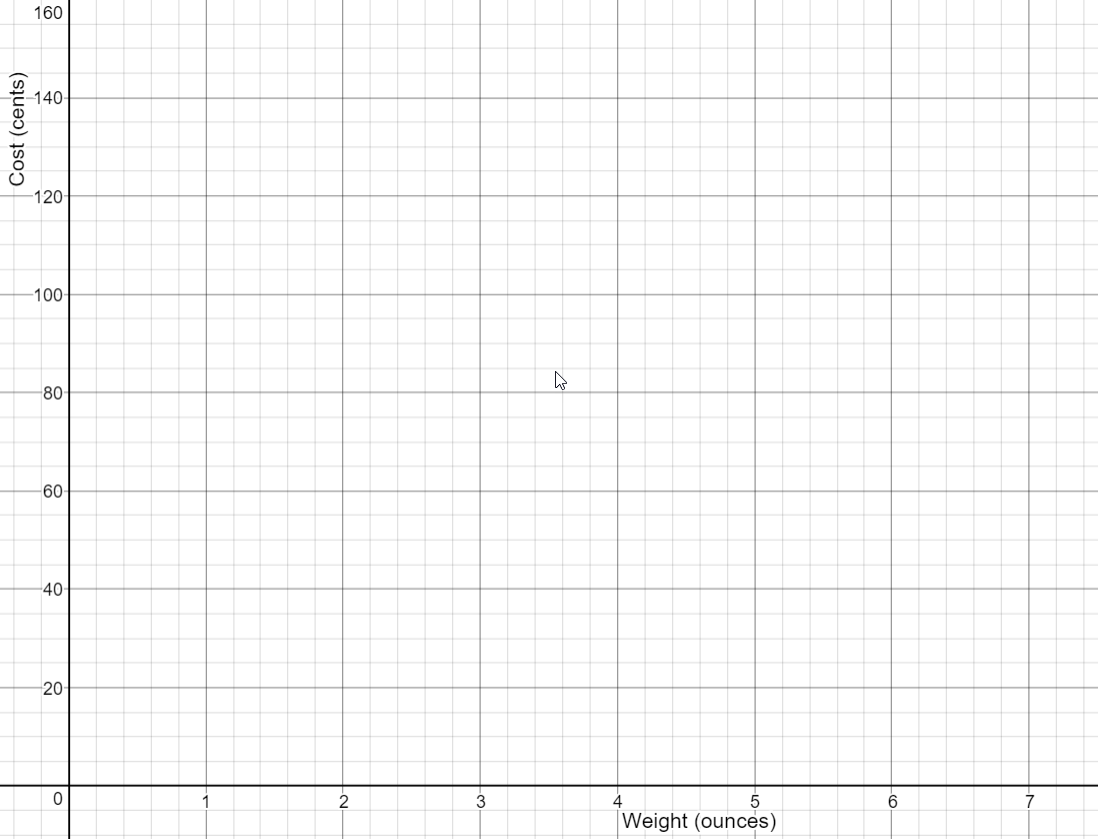
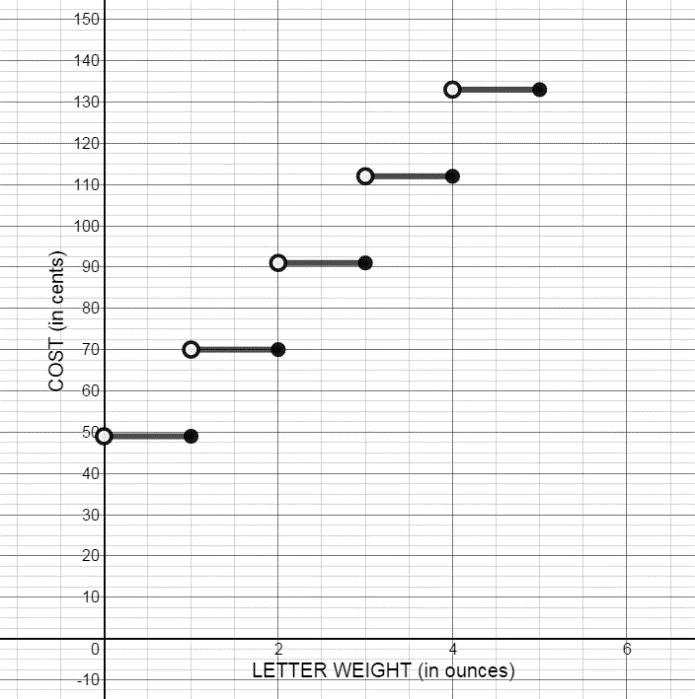
- Complete the table of letters with the following weights.
-
Given: $f(x) = \frac{{3{x^2} - 12x - 15}}{{{x^2} - 3x - 10}}$
- From looking at the given function (and NOT graphing), where would you expect to see vertical asymptote(s)?
$f(x) = \frac{{3{x^2} - 12x - 15}}{{{x^2} - 3x - 10}} = \frac{{3{x^2} - 12x - 15}}{{\left( {x - 5} \right)\left( {x + 2} \right)}}$
Expect the vertical asymptotes to be located at x value where the denominator is equal 0, and the numerator is equal some number other than zero. There are possibly vertical asymptotes at $x = 5$ and $x = -2$.
- Graph the function. Where are the vertical asymptote(s)?
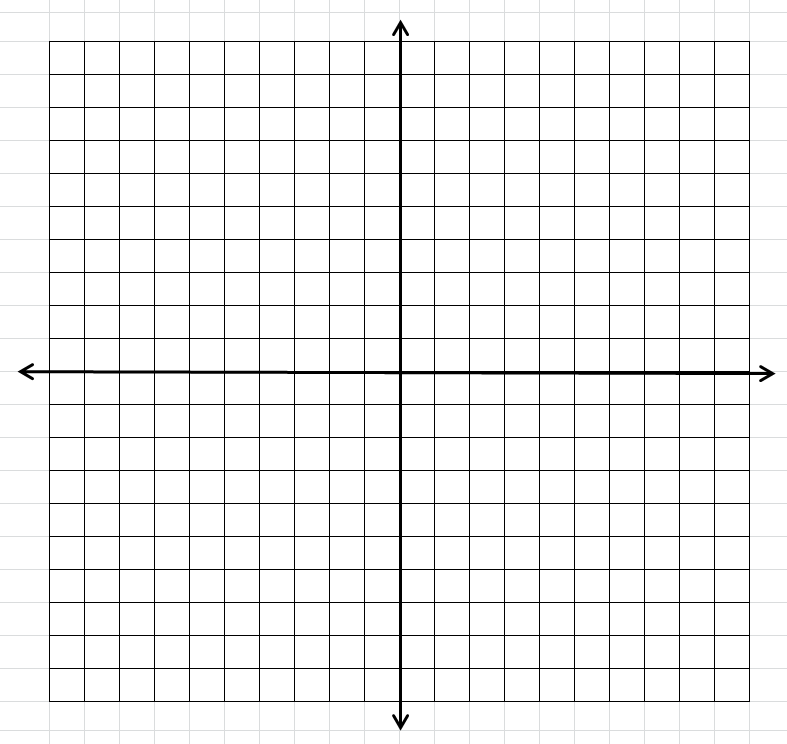
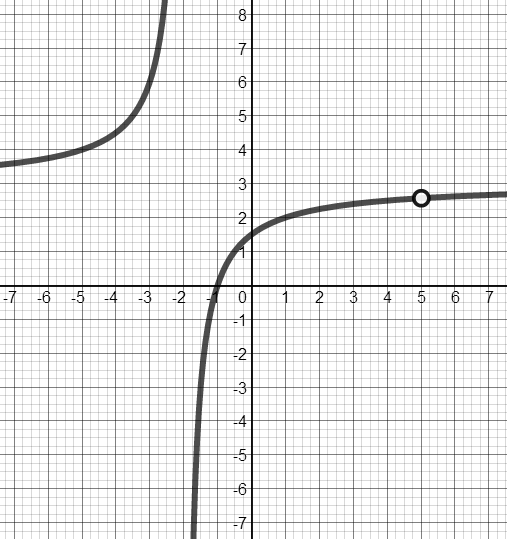
Vertical Asymptote at x = - 2 and a hole at x = 5.
- Do you get the same answer for a & b? Why or why not?
There was a hole at $x = 5$. If you factor the numerator AND the denominator, they both contain $(x - 5)$.
- From looking at the given function (and NOT graphing), where would you expect to see vertical asymptote(s)?
Notes
Informal Definition: Continuity
A function is continuous over an interval if the graph over the interval can be drawn without removing the pencil from the paper.
Formal Definition: Continuity
A function, f(x), is continuous at the point $x = c$ if all three of the following requirements are met:
- $\underset{x\rightarrow\ c}{lim} f\left( x \right)$ exists
- $f\left( c \right)$ exists
- $\underset{x\rightarrow\ c}{lim} f\left( x \right) = \;\;f\left( c \right)$
Examples of Continuous and Discontinuous Functions:
![Graph of f(x)=-(1/2)(x-1)^2 + 3. Hole in graph of f(x) at x=1. With equation f(x) should be 3. Point at (1,2). Domain of graph [-1,4]](images/notes/u1s3p1a.png)
This function is discontinuous because the $\underset{x\rightarrow\ 1}{lim} f\left( x \right)$ and the point $f\left( 1 \right)$ are not equal.
![Graph of f(x)=-(1/2)(x-1)^2 + 3. Point at (1,3) defined and all other poings in dpmain [-1,4] defined as (x, f(x0)](images/notes/u1s3p1b.png)
This function is continuous since the limit and the value at $x=1$ are equal.
![Graph of f(x)=-(1/2)(x-1)^2 + 3. Hole in graph of f(x) at x=1. With equation f(x) should be 3. No other point for x=1 defined. Domain of graph [-1,4]](images/notes/u1s3p1c.png)
The function is discontinuous because the point $f\left( 1 \right)$ does not exist.
Active Calculus https://open.umn.edu/opentextbooks/
In Groups: Use the formal definition of continuity to discuss the continuity of the function whose graph is shown below.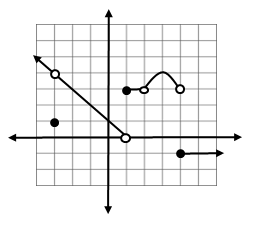
-
Continuity at $x = - 3$
Discontinuous @ $x = - 3.$ The $\underset{x\rightarrow-3}{lim} f(x)$ exists and the point $f( - 3)$ exists, but they are not equal.
-
Continuity at $x = - 2$
Continuous @ $x = - 2 \quad\ $ Satisfies all 3 requirements.
-
Continuity at $x = 1$
Discontinuous @ $x = 1 \quad\ \underset{x\rightarrow\ 1}{lim} f(x) \:\ $ DNE
-
Continuity at $x = 2$
Discontinuous @ $x = 2.$ The point $f(2)$ does not exist.
-
Continuity at $x = 3$
Continuous @ $x = 3 \quad\ $ Satisfies all 3 requirements.
-
Continuity at $x = 4$
Discontinuous @ $x = 4 \quad\ \underset{x\rightarrow\ 4}{lim} f(x) \:\ $ DNE
Rules for Continuity
- Constant functions $f(x) = k$ are continuous for all x.
Example: $f(x) = - 2$
- Power functions $f(x) = {x^n}$ are continuous for all x, where n is a positive integer.
Example: $f(x) = {x^5} $
- Polynomial Functions are continuous for all x.
Example: $f(x) = 2{x^3} - 5x + 1$
- Rational Function s are continuous for all x except where the denominator = 0.
Example: $f(x) = \frac{{{x^2} + 5}}{{x - 3}},$ where numerator and denominator are polynomials.
- $\sqrt[n]{{f(x)}}$ functions are continuous for all x where n is an odd positive integer > 1.
Example: $\sqrt[3]{x}$
- $\sqrt[n]{{f(x)}}$ functions are continuous for all x where n is an even positive integer and f(x) is positive.
Example: $\sqrt[4]{x}$
Assessing Continuity
Are the functions continuous? Use the Rules for Continuity to explain your answers.
-
$h\left( x \right) = 5 - 3x$
Yes, because it is a polynomial function.
-
$n\left( x \right) = \;\frac{{x - 3}}{{{x^2}\; + \;2x - 15}}$
$n\left( x \right) = \;\frac{{x - 3}}{{(x + 5)(x - 3)}}$
No, it is discontinuous at x=- 5 and x = 3.
-
$f\left( x \right) = \;\sqrt {25 - {x^2}} $
Continuous for $x: - 5 \le x \le 5$
-
$g\left( x \right) = \;\sqrt[3]{{{x^2} - 4}}$
Yes, continuous for all x because it is a function with an odd root.
